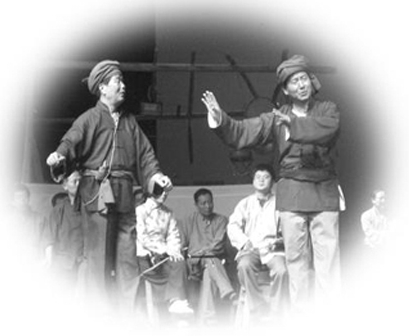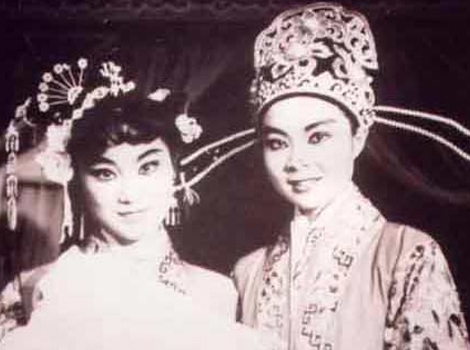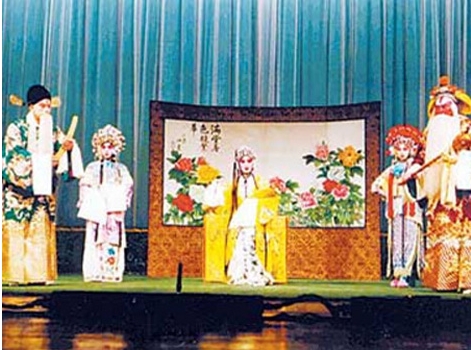

The Han Tune Erhuang Opera, also called Shaan Erhuang and Shan Erhuang, is the second important genre of opera in Shaanxi, and enjoys popularity in Ankang, Hanzhong, Shangluo and Xi'an of Shaanxi Province and some areas in Gansu and Hubei Provinces. Originating from mountain airs, eclogues and folksongs, it developed its own style with influence of the Shaanxi opera (qinqiang in Chinese) during the early Qing Dynasty, and by absorbing the tunes of Kunqu opera, Chuiqiang and Gaobozi, and using local dialects. At the very beginning, the opera was accompanied by two flutes which used bamboo as huang (reed), hence the name. To be distinguished with Peking Erhuang opera, it was also named Tu Erhuang. There are a great variety of plays in the Han Tune Erhuang Opera, over 1200 in Ankang alone. By far, 420 complete series and 517 highlights have been explored and sorted out. Most of these plays have drawn materials from Romance of the States of Eastern Zhou, Romance of the Three Kingdoms, Canonization of Gods and other historical stories and folk legends.

In its evolvement, the Han Tune Erhuang Opera developed into many schools, such as Ankang, Hanzhong, Shangluo and Guanzhong. Plenty of famous actors emerged endlessly. The roles fall into ten categories, mo (aged male role), jing (painted-face role), sheng (middle-aged male role), dan (female role), chou (clowns), wai (acting middle-aged male role), xiao (young male role), tie (secondary female role), fu (aged female role), and za (acting painted-face role). The performance of Han Tune Erhuang Opera is refined and exquisite. The alternation between normal voice and falsetto gives the singing a melodious and agreeable quality. Middle-aged male roles and aged female roles use the normal voice, other female roles use falsetto, and painted-face roles use huyin (literally tiger voice, which is high, clear and strong). The tunes of Xipi and Erhuang are widely used in the opera. Xipi is used to express happy and free-hearted emotions and scenes, while Erhuang is used to express sorrowful and solemn emotions and scenes. The two alternate with each other in the performance based on the plot, presenting sweet voice and bitter voice. As to the accompanying instruments, stringed and wind instruments include huqin, erhu, yueqin, sanxian, ruan, flute, trumpet, and so on; percussion instruments include yaban, bangzi, baogu, jiangu, gongs, cymbals, etc. The types of facial make-up in the Han Tune Erhuang Opera are more delicate than those in Peking opera and Shaanxi opera. There are more than 450 types of facial make-up that have been collected.